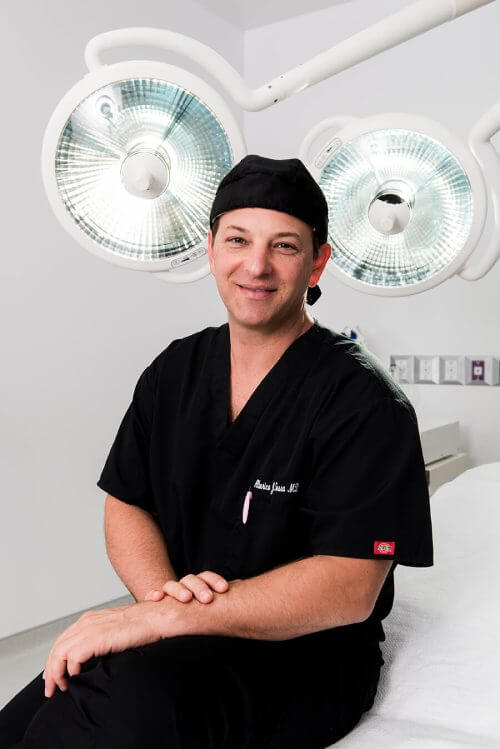Are you concerned about the risks of a brow lift? You’re not alone. While the goal of a brow lift is to help you achieve a more youthful appearance, many people hesitate to move forward because of concerns about surgical risks. Common concerns include visible scarring, numbness, and nerve damage. Understanding these risks is part of preparing wisely. When you understand the risks, you’re better equipped to set realistic expectations and collaborate effectively.
This guide will walk you through the potential complications, how they differ by technique, and the steps you can take to minimize them.
What Is a Brow Lift?
A brow lift is a cosmetic surgical procedure designed to elevate the brows and reduce forehead wrinkles. It targets sagging skin, drooping brows, and deep frown lines to create a smoother, more youthful appearance. The procedure can enhance overall facial balance and expression.
Why Consider a Brow Lift?
Patients typically choose a brow lift for several cosmetic and functional reasons, including:
- Reduce visible signs of aging
- Refresh a tired or angry appearance
- Improve facial symmetry
- Enhance vision
- Complement other facial procedures
- Boost self-confidence
Risks and Complications
As with any surgical procedure, brow lifts carry certain risks. These may include:
- Scarring
- Numbness or altered sensation
- Asymmetry
- Hair loss around incision sites
- Infection
Risk levels can vary depending on the technique used and individual factors. Most complications are temporary. In some cases, issues such as asymmetry or scarring may persist or require correction.
Factors that Influence Risk
Certain surgical approaches are more invasive and carry different healing profiles. Some of the factors that influence risk include:
- Age and overall health
- Skin type and healing ability
- Smoking status
- Use of medications or supplements that affect blood clotting
- The skill, training, and experience of the surgeon
- The type of brow lift technique performed
Minimizing Risks Before Surgery
You can significantly reduce your chance of complications by taking proactive steps before surgery. These include:
- Stop smoking
- Discontinue medications or supplements that increase bleeding risk
- Disclose all current medical conditions
- Talk to your surgeon
- Follow the aftercare guidelines
- Maintain realistic expectations about the results
- Taking these precautions can promote healing and improve your overall result.
How Long Do Risks Last?
While some risks resolve quickly, others may take time to fade. Common timelines include:
- Swelling and bruising: Typically improve within 1-3 weeks
- Numbness or tingling: Can persist for several months, occasionally lasting up to a year
- Itching or tightness: Common during the early healing phase
- Return to work: Usually within 7-14 days
- Exercise: Can be resumed after 3-4 weeks (with clearance)
Long-term issues like persistent asymmetry or visible scarring may require revision procedures 6 to 12 months after surgery if they do not self-correct.
Brow Lift Techniques and Their Complication Profile
Here are the complication rates reported in medical studies:
- Endoscopic brow lift is considered the least invasive technique. This method results in minimal scarring and a shorter recovery period. Reported complications include temporary numbness (approximately 2%) and hair loss or alopecia near incision sites (around 2.8%).
- Coronal brow lift involves a large incision running across the top of the scalp, from ear to ear. However, it comes with a higher risk of alopecia (2.2%) and sensory loss due to the extensive dissection required.
- Hairline lift (pretrichial brow lift) is designed for individuals with high foreheads. It has the highest revision rate among brow lift techniques, with studies reporting around 7.4%.
- Temporal (lateral brow lift) targets the outer portion of the brow and is less invasive than full forehead lifts. The risk is moderate, with an estimated rate of 1.5%.
- Direct brow lift involves an incision just above the brow hairs. It carries the highest risk of numbness (5.5%) and has the greatest potential for visible scarring due to its placement on the forehead.
Note: These percentages reflect general ranges reported in published clinical studies. Actual outcomes may vary depending on the surgeon’s technique and the patient’s anatomy and healing response.
Comparing Surgical and Nonsurgical Brow Lifts
|
Aspect |
Surgical Brow Lift |
Nonsurgical Brow Lift (e.g., Botox®, RF treatments) |
|
Invasiveness |
Involves incisions and anesthesia |
Minimally invasive |
|
Recovery Time |
7–14 days for basic activities |
Little to no downtime |
|
Longevity of Results |
Long-lasting |
Temporary (typically 3–4 months) |
|
Risk of Scarring |
Possible, especially with coronal or direct techniques |
None |
|
Common Side Effects |
Swelling, bruising, numbness, asymmetry, hair loss |
Bruising (1.7%), flu-like symptoms (0.7%), brow ptosis (0.3%) |
|
Ideal Candidates |
Patients with moderate to severe brow sagging |
Patients with mild brow descent or looking for a subtle lift |
|
Cost |
Higher upfront cost |
Lower cost per session, but requires ongoing maintenance |
|
Customizability |
Highly customizable per patient |
Somewhat limited by product and technique |
|
Revision Rates |
Varies by technique (up to 7.4% for hairline lift) |
No revisions; repeat treatments are required |
When to Contact Your Surgeon
Contact your surgeon immediately if you experience any of the following:
- Sudden or severe swelling
- Bleeding from the surgical site
- Fever over 100°F (37.8°C)
- Visual changes or disturbances
- Persistent or worsening pain
- Irregular heartbeat or breathing difficulty
Final Words
Understanding the risks of a brow lift is an important part of making an informed decision. While the majority of procedures are safe and successful, potential complications do exist. Proper planning, realistic expectations, and careful post-op care are key to achieving safe, successful, and satisfying results. Choosing a qualified and board-certified surgeon can reduce the risk. A brow lift can be a safe procedure if you plan it thoughtfully.






